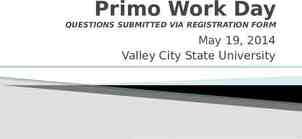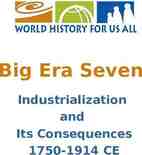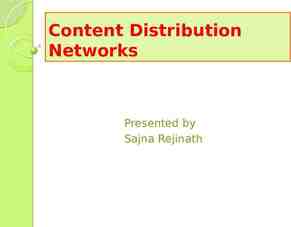Storage and Multimedia: The Facts and More Chapter 6
49 Slides686.00 KB

Storage and Multimedia: The Facts and More Chapter 6

Objectives List the benefits of secondary storage Identify and describe storage media available for personal computers Differentiate among the principal types of secondary storage Discuss the benefits of multimedia Explain how data is organized, accessed, and processed

Contents The Benefits of Secondary Storage Magnetic Disk Storage Logical Layout of a Disk Disk Drive Operation Optical Disk Magnetic Tape Storage Organizing and Accessing Data Processing Stored Data Applications

Secondary Storage Benefits Semi-permanent Non-volatile Reliable Convenient – Locate and access data quickly

Secondary Storage Benefits Compressed storage – Diskette – about 500 printed pages – Optical disk – about 500 books Economy – Savings in physical storage costs – Savings in the speed and convenience of filing and retrieving data

Types of Storage Magnetic Disk Storage Optical Disks – Magneto-optical – CD-ROM – CD-R – CD-RW – DVD-ROM Magnetic Tape Storage

Magnetic Disk Storage Data represented as magnetic spots – Magnetized spot 1 – Absence of a magnetized spot 0 Read – Converts the magnetized data to electrical impulses Write – Converts electrical impulses to magnetized spots on disk

Disk Capacity Size What’s stored? MB older hard disks User documents GB current PC Graphic images TB coming soon Video files Software Audio files

Diskettes Low capacity – small files Portable Flexible Mylar coated with metallic substance Hard plastic jacket for protection 3 ½ inch, 1.44 MB

High-Capacity Portable Disks Larger files Portable High-capacity – 120 / 200 MB – Can read and write standard diskettes – Ex: Superdisk Zip disk – 250 MB – not compatible with 3 ½ inch diskettes

Data Compression Why use? – Squeeze big files onto small disks – Speed up data transfer of files Techniques – Remove all extra space characters – Substitutes a smaller data string for a frequently occurring set of characters – Software uses formula to determine how to compress – Must be decompressed

Hard Disk Various sizes Portability – Generally non-portable – Removable hard disks available for PC Rigid platter coated with metallic substance

Disk Pack Several platters Airtight, sealed module Mount disk pack on disk drive

Disk Pack Disk pack has set of access arms Two read / write heads per arm – One reads top surface – One reads bottom surface Access arms move together as a unit Only one read/write head works at a time

Logical Layout of a Disk Track Concentric circles Passes under read/write head as disk rotates 1.44 MB diskette has 80 tracks on each surface Each track stores the same amount of data

Logical Layout of a Disk Sector Pie-shaped division of track Holds a fixed number of bytes (512 bytes) Cluster – Adjacent sectors treated as a unit of storage – Fixed number (2-8 sectors) – Minimum space allocated to a file

Logical Layout of a Disk Cylinder Same track on each platter Store files across multiple platters Reduces access time

Logical Layout of a Disk Zone Recording Assigns more sectors to tracks in outer zones More sectors more data storage available

Disk Drive Read / Write Operation Disks rotate Access arm moves read/write head Read / write operation begins and continues until complete Data is transferred to/from memory

Access Time Seek time Head switching Rotational delay Data transfer rate

Data Destroyed Head Crash

Disk Caching Required data read into memory Adjacent data read into disk cache (special area of memory) Program encounters a read instruction – Check disk cache – If present, no physical read is required – If not present, read from disk

RAID Redundant Array of Independent Disks

Optical Disk Greater capacity than other portable media Process – Laser writes on metallic material spread over the surface of disk – Heat from laser produces pits on disk surface – Reading – laser picks up light reflections from the pits Technology – ROM – WORM

MO Magneto-optical Hybrid High-volume capacity Written multiple times Process – Laser melts a microscopic spot – Magnet aligns crystals – Reading – laser picks up light reflection from crystals

CD-ROM Compact Disk Read-Only Memory High capacity portable Read multiple times Cannot record Capacity – up to 680 MB (450 standard 3 ½ inch diskettes) Used for software distribution

CD-R Compact Disc-Recordable High capacity Portable Write once Read multiple times – CD-R drive – CD-ROM drive

CR-RW Compact Disk-Rewritable High capacity Portable Read multiple times Record multiple times Some compatibility problems reading CD-RW disks on CD-ROM drives

DVD-ROM Digital Versatile Disk Larger capacity than CD-ROM – Standard – Up to 4.7 GB, 7 times more than CD-ROM – Double layers – 8.5 GB – Double-sided – 17 GB Data is packed more densely Read multiple times, Cannot record Can read CD-ROM disks

DVD-ROM Digital Versatile Disk Benefits – Full-length movies – Audio quality comparable to audio compact disks – High-volume business data Expected to replace CD-ROM in the near future

Magnetic Tape Storage Plastic tape with magnetic coating Capacity based on density – bpi or cpi Magnetic tape unit – Read/write head – Erase head erases previously recorded data Inferior to disks – Not as reliable – Sequential access to data Inexpensive Primarily for backup

Backup Systems Prevent data loss – – – – – – Fire Natural disaster Electromechanical failures of disk User introduced errors Software errors Accidental data deletion Store data in more than one place

Data Organizing and Accessing Plan for way data is – Received – Organized – Stored – how it will be processed Plan determined by programmer or systems analyst

Data Getting Organized Character Field Record File Database

Data Getting Organized Key Field Unique identifier for a record

Data Access Methods Application determines how data must be accessed by users Data is organized based upon access method Organization method limits choice of storage medium

Sequential Records are stored and accessed in order All records prior to the one requested must be read Magnetic tape storage

Direct / Random Access Records are not physically stored in any order Go directly to the record to read – Hashing – apply a formula to the key to produce the address of the record – Collision – same address from different keys Updating in place – Read, change, and return a record to the same place on disk DASD – Direct-Access Storage Device needed

Indexed Records are stored sequentially Index is generated that contains key and address Can be read in order sequential Can be read out of order random

Processing Stored Data Batch Transaction Terminology – Transaction – updates a record – Master file – contains all the data

Processing Stored Data

Batch Collect transactions into a transaction file and perform periodic updates Process – Transactions are sorted by key field – Computer matches the master and transaction keys – Performs requested action – add, revise, delete – New master file created – Error report is printed Master file only current immediately after processing

Transaction Processed upon request Real-time – process handled immediately Disk storage – Direct access to desired record needed – Immediate access to stored data – Immediate updating of stored data

Batch and Transaction Computer system may use both processing types based upon the application Transaction – Activities relating to current needs Batch – Updates per schedule

Applications Bank Transaction – Check balance – Record cash withdrawal Batch – Deposit left in the deposit drop – Bank statement

Applications Retail – POS Transaction – Item price – Inventory updates as sale is made Batch – Produce daily and weekly sales reports

Applications Motor Vehicle Transaction – Police check for stolen car report Batch – Motor vehicle records of owner information

Applications Multimedia Hardware – CD-ROM or DVD-ROM – Sound card or sound chip – Speakers MPEG – Video standards that support full-motion video – Faster drive provides faster data transfer and produces a smoother video







